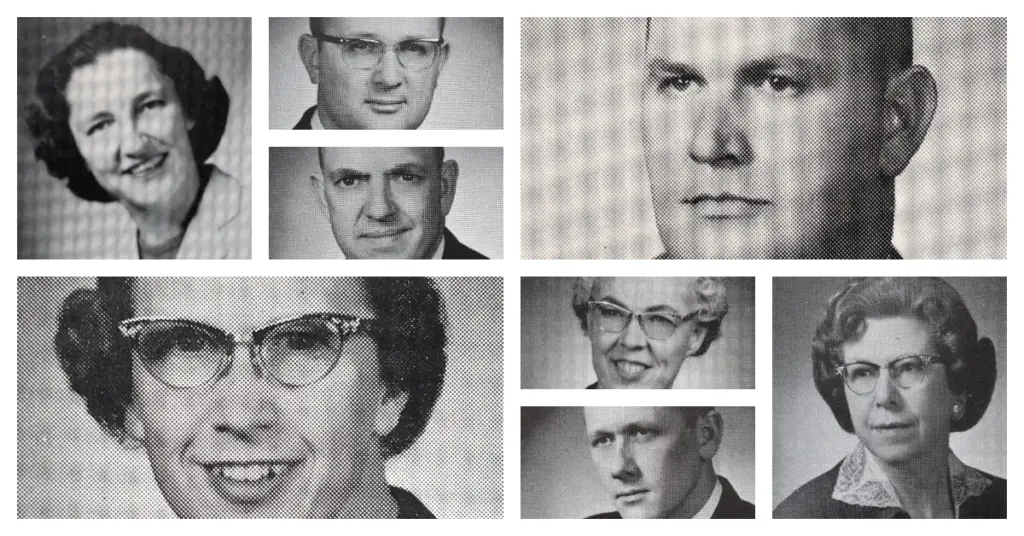
By PETER HANCOCK
Capitol News Illinois
phancock@capitolnewsillinois.com
Story summary:
- The 2025 school report card is the first one based on a new grading system that uses lower cut scores for proficiency in English language arts and math. State officials say the old system unfairly classified high-performing students as not proficient.
- States have been required to produce annual report cards since the 2002-2003 school year under a federal law formerly known as the No Child Left Behind Act. That law aimed to hold school systems accountable for bringing all students up to proficiency and closing persistent achievement gaps.
- This year’s report card shows there are still wide gaps between racial and ethnic groups in some area. In high school graduation rates the gaps are narrowing as the rates have increased among all groups.
This summary was written by the reporters and editors who worked on this story.
SPRINGFIELD — The first school report card issued under Illinois’ new, revised scoring system shows higher student proficiency rates in English language arts and math, but continuing disparities between racial, ethnic and economic subgroups.
The 2025 report card shows more than half of all students (52.4%) scored proficient or better on English language arts exams, but only 38% met grade-level proficiency standards for math.
Those numbers are based on standardized tests that students from third grade through high school took in the spring 2025 semester. They reflect a new scoring system the Illinois State Board of Education approved in August that established new benchmarks for proficiency.
“Illinois’ previous benchmarks for English language arts proficiency were the most restrictive in the country, resulting in the mislabeling of high achieving college ready students as being not proficient,” State Superintendent of Education Tony Sanders said during a media briefing on the report card.
“This meant that the students who were succeeding in school passing advanced placement and dual credit courses, taking leadership roles within their schools, enrolling in college and still being labeled as not proficient on our state assessment.”
The change in scoring systems was expected to result in more students being classified as proficient in reading and math, but fewer in science. And that is what happened.
In 2024, only 39% of students who were tested scored proficient or better in English language arts and only 28% did so in math. On the science assessment, which is given to fifth and eighth grade students, the proficiency rate dropped from 53.1% in 2024 to 44.6% in 2025.
But Sanders said the 2025 scores cannot really be compared with previous years because the year-over-year changes are mostly the result of the new scoring system, not a change in how well students performed. However, he also said there were other indications that student performance did improve in 2025.
“They would have increased if we had kept the same cut scores,” he said. “However, we changed the cut scores, so we can’t tell you what they would have been. But we know they would have improved.”
Performance gaps
All states have issued annual report cards since the 2002-2003 school year when they were mandated by the federal law known as the No Child Left Behind Act. They were intended as a tool to hold districts and individual schools accountable for bringing all students up to a level of proficiency in reading and math, and for improving their high school graduation rates.
That also meant closing the persistent achievement gaps between racial, ethnic and economic subgroups of students.
But the law also gave states flexibility to establish their own standards for proficiency and to develop their own tests to measure student performance.
In Illinois, most students in grades 3-8 take the Illinois Assessment of Readiness for English language arts and Math. Students in fifth and eighth grade also take the Illinois Science Assessment.
At the high school level, ninth and 10th grade students take the PreACT Secure exam. High school juniors and some high school seniors take the ACT with Writing, which includes tests in English, math, reading, science and writing.
In Illinois, the 2025 report card shows there are still wide gaps in proficiency rates between white, Black and Hispanic students in both English language arts and math.
Among fourth graders, for example, 55.4% of white students scored proficient or better in math, compared to 28.8% of Hispanic students and 17.4% of Black students.
Among eighth graders, two-thirds of white students (66.6%) scored proficient compared to just over one-third (36.7%) for Black students and 45.4% for Hispanic students.
The 2025 report card also includes data for the first time for a newly categorized ethnic group — “Middle Eastern or North African,” abbreviated MENA in the data files.
Among MENA students, the 2025 report card showed a 53.9% proficiency rate in fourth-grade English language arts and a 42.3% proficiency rate for eighth-grade math.
Graduation rates
One area where Illinois has made progress in closing achievement gaps is high school graduation rates.
In 2025, the statewide four-year graduation rate reached a 15-year high of 89%. That was up 3.4 percentage points from a decade earlier. But the rate was also up across all demographic groups, and the gap between those groups narrowed significantly.
In 2015, the four-year graduation rate among white students was 90.2%. That was 14.7 points higher than the Black graduation rate, and 9.5 points higher than the rate for Hispanic students.
In 2025, the graduation rate for white students inched up to 92.4%, but it also rose among other groups. As a result, the gap between white and Black students narrowed to just 9.5 percentage points, and the gap between white students and Hispanic students narrowed to just 6 points.
Sanders gave credit for much of that improvement to the Evidence-Based Funding formula, which lawmakers passed in 2017. That law called for adding at least $300 million per year in new funding each year to the state’s K-12 education budget.
Since then, Sanders said, Illinois has added more than $3 billion in EBF funding to the budget, with the bulk of that money targeted toward the least-funded school and earmarked for things specifically designed to improve student outcomes.
“Districts have used these resources to expand interventions like summer school,” he said. “They’ve added mentoring, credit recovery courses, transition programs for English and math, and they broadened access to career and technical education, advanced placement, international baccalaureate and dual credit. These opportunities keep students engaged and on track for success.”
Other findings
The report card also contains data on several other measures of the state’s education system.
The number of full-time equivalent teachers working in Illinois reached a new high of 137,899, an increase of 687 from the previous year. The teaching workforce also became slightly more racially diverse, with 21.1% of them classified as nonwhite, compared to 20.4% last year. But total student enrollment decreased slightly to just under 1.85 million.
Chronic absenteeism declined for the third consecutive year in 2025 but still remained high at 25.4%. Students are classified as chronically absent if they miss 10% or more of the days in a school year, regardless of whether the absence is excused or not. The rate shot up during the COVID-19 pandemic, reaching a peak of 29.8% in 2022.
Capitol News Illinois is a nonprofit, nonpartisan news service that distributes state government coverage to hundreds of news outlets statewide. It is funded primarily by the Illinois Press Foundation and the Robert R. McCormick Foundation.









